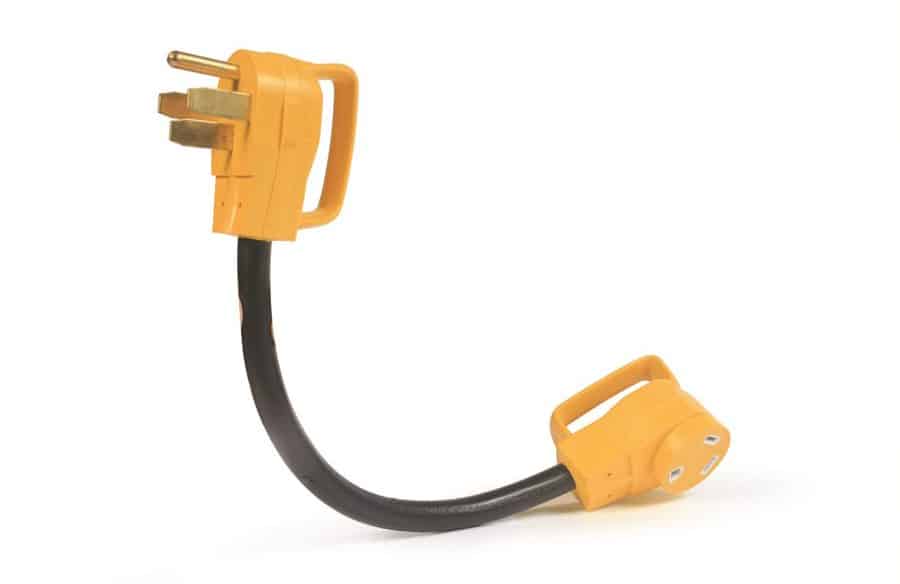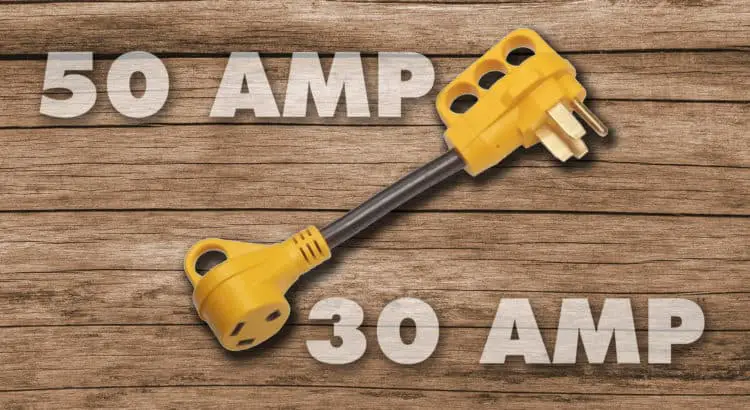The following is a post on RV amps that was made by a Cool RV Stuff (FB Group) member who is also a journeyman electrician. His posts regarding RV power and electricity were so helpful and well done explaining the basics of RV electricity, we wanted to re-post it here and are doing so with Steven’s permission.
I’m a licensed journeyman electrician here. I’m just going to post this to clear up any confusion because reading the comments on certain common social media posts, since there is a lot of misinformation out there.
Voltage Basics
First of all, 110/120 and 220/240 are voltages. 110 is the same as 120. 220 and 240 also refer to the same voltage supplied. For the sake of this post, I’ll meet you all in the middle and call it 115 and 230. Fair?
Secondly, a 50 amp RV service is fed with 230 volts. There are 4 conductors. Line 1 (115V), Line 2 (115V), Neutral, and Ground. However, there are no RVs that I am aware of that use 230V equipment anywhere in them (see note below).
NOTE: I am not referring to 230V 50hz service as found in other countries. This post’s voltages were intended for North America. I’ve also been informed by a few people in the comments that they have 230-volt equipment. It’s rare but there are some RVs out there that do utilize 230V. They also have protective equipment to ensure that 230V is available to said equipment and if it isn’t that equipment doesn’t work
So essentially you have two 50 amp legs of 115 volts.
A 30 amp RV service is fed with 115 volts. You have 1 Line, 1 Neutral, and 1 Ground.
How Electrical Adapters Work
The 50-to-30 amp, or 50-to-20 amp dogbone adapters use one leg of the 50 amp service on one end of the dogbone, and it connects both hot legs together on the adapted side. For example, if you have a 50 amp trailer and you use a dogbone adapter so you can plug into a 30 amp pedestal, the 2 hot leads are separate at the trailer but joined together in the adapter and fed with only the one hot wire from the 30amp receptacle on the pedestal.
This means there are no longer 230 volts to the trailer. Only 115 volts. This is okay since your trailer only uses 115 volts. So don’t run multiple high-load devices on an adapter — such as two ACs at the same time.

Should You Really Be Giving Electrical Advice?
PLEASE do not give electrical advice to people online unless you are absolutely sure AND have experience in electrical work. There are a lot of electricians in Facebook groups like Cool RV Stuff who will gladly answer your questions.
And if you’re the one posting a question, don’t take the first comments as the correct answers. Generally, you’ll end up with a consensus of people agreeing on the correct answer, and wrong answers should (and often WILL) be pointed out.
Doing your own electrical work can be dangerous and fatal for you and your family if you don’t know what you’re doing and random online RV owners, while mostly knowledgeable, are not always the smartest when it comes to electrical.
So In a Nutshell…
Is a 50Amp trailer 230-Volts? Yes. Does it utilize 230-Volts? No.
Could you use 230-Volt equipment with a 50amp trailer? Technically yes but if you ever use an adapter to a lower amp service and utilize the 230-volt equipment you will burn up the equipment and possibly start a fire. You also don’t know if all campgrounds are using a proper 230-volt system or if the 2 legs are on the same phase. You would have to test power before you plug in with an actual multimeter. Long story short, stick with 115-volt equipment.
Hope this clears things up a bit. Be sure to also read Steven’s explanation of RV electrical basics in a way anyone can understand.



